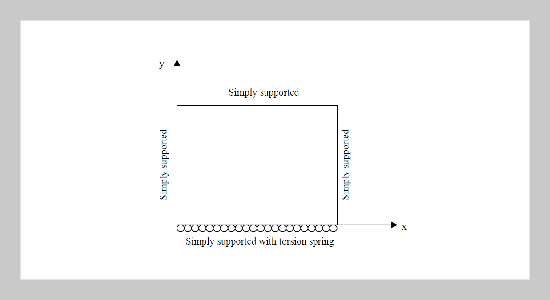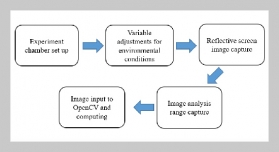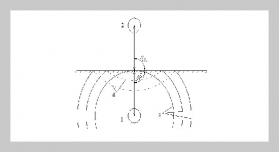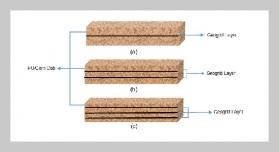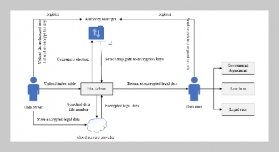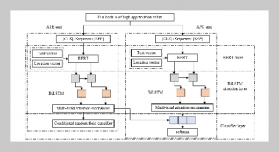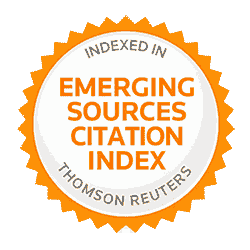1Department of Electronic Engineering National Penghu Institute of Technology Penghu, Taiwan 721, R.O.C.
Received:
May 16, 2003
Accepted:
October 23, 2003
Publication Date:
December 1, 2003
Download Citation:
||https://doi.org/10.6180/jase.2003.6.4.05
ABSTRACT
The vibration response of isotropic and orthotropic plates with mixed boundary conditions is numerically modeled using a solution that is based on the differential quadrature method (DQM). The DQM is applied to each region and with the imposition of appropriate boundary conditions; the problem is transformed into a standard eigenvalue problem. The δ technique is used to treat the various boundary conditions. The results also demonstrate the efficiency of the method in treating this class of engineering problem.
Keywords:
Differential Quadrature Method, Plates, Numerical Methods, Vibration Analysis, Mixed Boundary Condition
REFERENCES
- [1] Bellman, R. E., Kashef, B. G. and Casti, J., “Differential Quadrature: a Technique for Rapid Solution of Nonlinear Partial Differential Equations,” Journal of Computational Physics, Vol. 10, pp. 40-52 (1972).
- [2] Civan, F. and Sliepcevich, C. M., “Application of Differential Quadrature to Transport Processes,” Journal of Mathematical Analysis and Applications, Vol. 93, pp. 206-221 (1983).
- [3] Civan, F., “Solving Multivariable Mathematical Models by the Quadrature and Cubature Methods,” Numerical Methods for Partial Differential Equations, Vol. 10, pp. 545-567 (1994).
- [4] Han, J. B. and Liew, K. M., “Axisymmetric Free Vibration of Thick Annular Plates,” International Journal of Mechanical Science, Vol. 41, pp. 1089-1109 (1999).
- [5] Chen, W. and Zhong, T., “The Study on the Nonlinear Computations of the DQ and DC Methods,” Numerical Methods for Partial Differential Equations, Vol. 13, pp. 57-75 (1997).
- [6] Bert, C. W., Wang, X. and Striz, A. G., “Convergence of the DQ Method in the Analysis of Anisotropic Plates,” Journal of Sound and Vibration, Vol. 170, pp. 140-144 (1994).
- [7] Bert, C. W., Wang, X. and Striz, A. G., “Differential Quadrature for Static and Free Vibration Analysis of Anisotropic Plates,” International Journal of Solids and Structures, Vol. 30, pp. 1737-1744 (1993).
- [8] Bert, C. W., Wang, X. and Striz, A. G., “Static and Free Vibration Analysis of Beams and Plates by Differential Quadrature Method,” Acta Mechanica, Vol. 102, pp. 11-24 (1994).
- [9] Malik, M. and Bert, C. W., “Implementing Multiple Boundary Conditions in the DQ Solution of Higher-order PDE’s: Application to Free Vibration of Plates,” International Journal for Numerical Methods in Engineering, Vol. 39, pp. 1237-1258 (1996).
- [10] Xiang, Y., Liew, K. M. and Kitipornchai, S., “Vibration Analysis of Rectangular Mindlin Plates Resting on Elastic Edge Supports,” Journal of Sound and Vibration, Vol. 204, pp. 1-16 (1997).
- [11] Laura, P. A. A. and Grossi, R. O., “Transverse Vibration of a Rectangular Plate Elastically Restrained Against Rotation Along Three Edges and Free on the Fourth Edge,” Journal of Sound and Vibration, Vol. 59, pp. 355-368 (1978).
- [12] Laura, P. A. A. and Gross, R. O., “Transverse Vibrations of Rectangular Plates with Edges Elastically Rrestrained Against Translation and Rotation,” Journal of Sound and Vibration, Vol. 75, pp. 101-107 (1981).
- [13] Grossi, R. O. and Nallim, L. G., “A Note on the Strain Energy Stored in Rotational Springs at the Plate Edges of Non-uniform Thickness,” Journal of Sound and Vibration, Vol. 206, pp. 448-452 (1997).
- [14] Gorman, D. J., “Accurate Free Vibration Analysis of Shear-deformable Plates with Torsional Elastic Edge Support,” Journal of Sound and Vibration, Vol. 203, pp. 209-218 (1997).
- [15] Omurtag, M. H. and Kadioglu, F., “Free Vibration Analysis of Orthotropic Plates Resting on Pasternak Foundation by Mixed Finite Element Formulation,” Computers and Structures, Vol. 67, pp. 253-265 (1998).
- [16] Malik, M., and Bert, C. W., “Implementing Multiple Boundary Conditions in the DQ Solution of Hogher-order PDE’s: Application to Free Vibration of Plates,” International Journal for Numerical Methods in Engineering, Vol. 39, pp. 1237-1258 (1996).
- [17] Leissa, A. W., Vibration of Plate, NASA SP-160, U.S.A. (1969).


